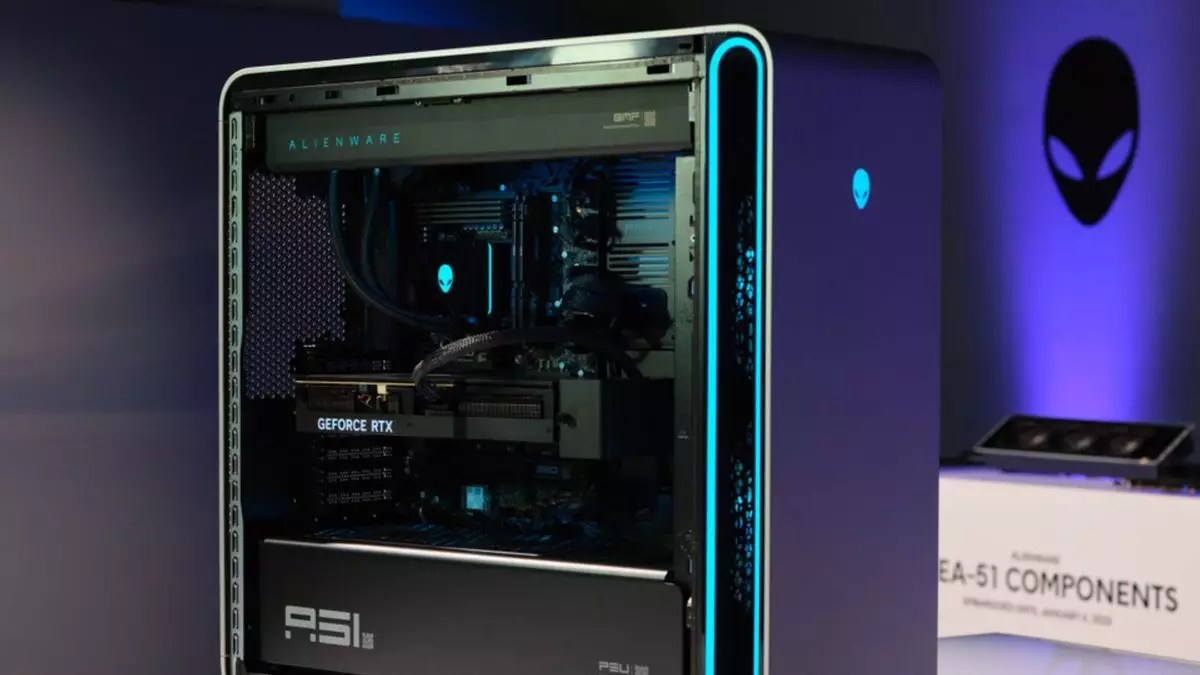In the world of gaming PCs, Alienware represents a duality of aspirations and reality. Known for their high-performance, visually stunning rigs, this brand has forged a reputation that lands somewhere between excellence and frustration for gamers. The recent unveiling of the Area-51 desktop rig at CES sparked considerable excitement, but beneath the glossy surface lies a conundrum that begs scrutiny. The upgradeability claims might not shine as brightly as they appear, illustrating a classic case of “almost but not quite.”
Unpacking the Upgrade Paradox
At the heart of Alienware’s new offering is the promise of upgradeability, a feature many hardcore enthusiasts cherish. For a gaming rig to adapt over time, it must offer pathways for future enhancements—this rings especially true in a field marked by the rapid advancement of technology. Alienware teased that the new Area-51 desktop would stand out from its predecessors by allowing users to swap in different motherboards. Yet, the narrative soon raises eyebrows. Innovation requires investment, and for an additional $35, customers must purchase a unique conversion kit to unlock this supposed upgrade path. This is not merely a peripheral cost; it could deter budget-conscious gamers who were eager to dive into an adaptable hardware experience.
One could argue that introducing additional costs could tarnish the overall experience. An expansion designed to bolster connectivity shouldn’t come with a price tag attached. This feels less like empowerment and more like a clever tactic to monetize what should be a straightforward upgrade process. Consider how other brands have managed to offer extensive compatibilities for free; Alienware risks alienating the very audience they aimed to engage.
A Beautiful Rig Hitting a Wall
On the aesthetics and performance front, however, Alienware’s Area-51 doesn’t disappoint. Practical upgrades such as the latest RTX 50 series graphics cards, plus claims of an impressively cooler and quieter operation, generate intrigue. The attractive chassis and innovative thermal design continue to make a statement both in visual appeal and functionality. Alienware boasts that these new models can run up to 13% cooler and 45% quieter than former iterations, which is no small feat. The introduction of positive pressure airflow is commendable, too—this feature ensures that dust and heat are kept at bay, enhancing overall longevity and reliability.
What becomes disheartening is that despite all these intelligent design choices, the concept of true upgradeability seems to falter at a crucial junction—the motherboard. For much of the gaming community, being able to easily swap parts is what fosters a sense of ownership and personal customization in a build. When traditional avenues for upgrades become convoluted through added expense, the excitement surrounding the system begins to wane.
The Past’s Shadow Over the Future
Further complicating this picture is the stark limitation of compatibility with older Area-51 models. For anyone who has invested in previous iterations, the conversion kit falls flat. Those who are hoping to breathe new life into their older machines will find themselves thwarted, effectively left out of a major benefit that may have encouraged brand loyalty. Alienware’s claim that the new model is a beacon of modularity becomes sporadic when one considers the rigidities imposed by design choices that seem to disregard the history of their own product line.
Yet, it’s prudent to acknowledge the silver linings amid the drawbacks—the inclusion of QR codes on components for upgrade guidance speaks to a user-centric design philosophy that alleviates some headaches typically associated with hardware changes. Educating users on how to enhance their computers isn’t merely thoughtful; it empowers a wider audience to engage with their technology fully.
Daring to Hope for Progress
Ultimately, Alienware is at a crossroads. They have the potential to redefine their standing within the gaming community, yet the tactical choices they make will dictate if they move toward true modularity or remain confined to a model that emphasizes aesthetic innovation over functional upgradeability. As we embrace this era of ever-evolving technology, there lies an opportunity for brands like Alienware to align their products with the desires of gamers for longevity, adaptability, and minimal overhead in their upgrading processes. Failure to seize this chance could have implications far beyond any single product line—in the rapidly changing landscape of gaming PCs, perception is everything.


Leave a Reply